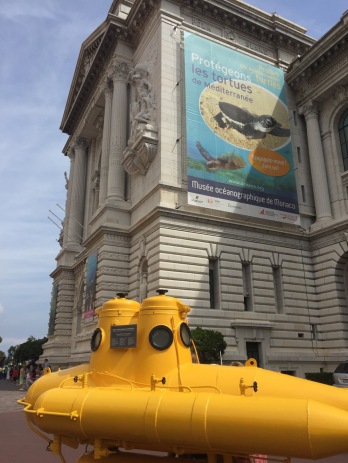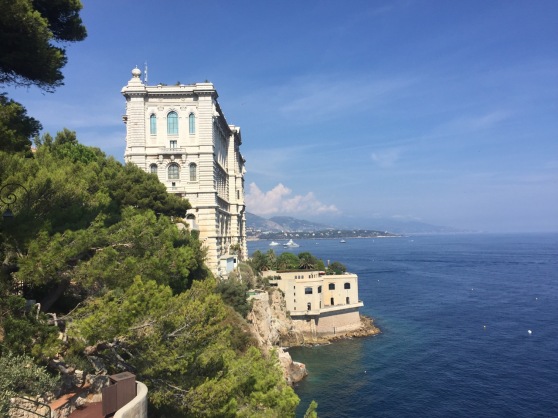
For over a hundred years, the Oceanographic Museum of Monaco has been one of the jewels in the crown for tourists in the Principality thanks to its famous aquarium and an international reputation. However, there is much more to this venerable institution than just a spectacular shark tank and some exotic stuffed animals – walking around the impressive marble walls of this beautiful building, you are treated to a journey through time and space and can really sense the passion of the man whose brainchild this museum is, Prince Albert I of Monaco. This in-depth article will obviously guide you through the main attractions of the museum but first it’s important to understand the historical context and the contribution that the museum is still making to the conservation of the oceans around the world.
- The historical background of the museum and its actions today
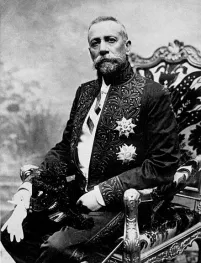
Prince Albert I of Monaco
Credit for the creation of the Oceanographic Museum should be firmly laid at the feet of one man, Prince Albert I of Monaco (1848-1922). Also known as the “Navigator Prince”, Albert’s passion for the seas started at an early age and guided his whole life: he was one of the pioneers in the late 19th century of the burgeoning science of oceanography, the study of the oceans and had a great career as a mariner and a scientist, both before and after acceding to the throne of Monaco in 1889 (succeeding his father, Prince Charles III who had founded and given his name to Monte-Carlo a few decades earlier).
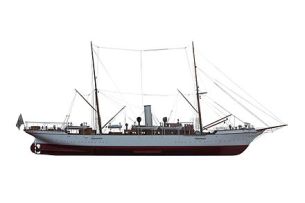
L’Hirondelle, one of Prince Albert I’s exploration ships
During this time, he organized several expeditions on research ships, notably to the Norwegian island of Spitsbergen in the Arctic ocean (where to this day the north-western tip is known as Albert I land) and collected several natural history samples like the now famous polar bear which were exhibited at the 1889 World Fair in Paris – the focal point of which was a spectacular but controversial steel tower built by the Seine by an engineer called Gustave Eiffel – within the Monaco Pavilion and was greatly successful, raking in huge amounts of visitors.
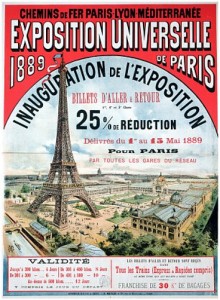
This success encouraged the Prince to carry on his research and make it more accessible to the public, which is why at the turn of the century, he decided to launch the construction of a purpose-built museum in a cliff-side location on the Rock of Monaco, close to the Palace. The first stone was laid in April 1899 and almost 11 years later, the opulent inauguration ceremony took place on 29 March 1910. The building, using mainly white limestone from La Turbie, a village just up in the hills from Monaco, was designed by architect Paul Delefortrie (1843-1910) and rises from sea level to 85 metres above – take note of the little design details on the façade, linking the building to the oceans. The result is absolutely stunning, a real temple dedicated to the sea – viewed from the side, it is difficult to comprehend how the building was built in the spot as it truly looks like a giant had picked it up intact and slammed it into the side of the mountain.

The museum viewed from the parking des Pêcheurs (C) K. Hin
During the building of the museum, Prince Albert I also founded in 1906 the Oceanographic Institute – Foundation Albert I, Prince of Monaco which has two branches. The first is in the “Maison des Océans et de la Biodiversité” in the Left Bank Latin Quarter of Paris, which still thrives and aims, in accordance with the Prince’s wishes, to provide higher level education on oceanography and make the science accessible to the general public. The second is obviously the Oceanographic Museum of Monaco, which finances the foundation and its own operating costs with the entrance fees.
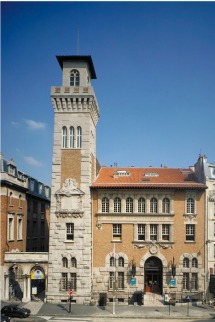
La Maison des Océans in Paris (C) M. Dagnino
Since then, the museum has continued to thrive as a venue combining, education, art, research and science, developing one of the world’s most famous aquariums. Over the last century, it has been led by several prominent directors, the best known of whom is the French adventurer Captain Jacques-Yves Cousteau who ran it for 31 years from 1957 to 1988.
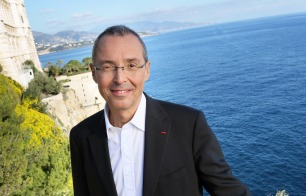
Robert Calcagno, the director of the Oceanographic Institute and therefore the museum, since 2009 (C) T. Ameller
Robert Calcagno, a Monegasque engineer and former government minister who is passionate about oceans, has run the Institute and therefore the museum since 2009 and launched a massive modernization programme to improve the visitor experience and raise revenue whilst emphasizing its links with the world of contemporary art with several high profile exhibitions, notably with Damian Hirst.
- Exploring the museum
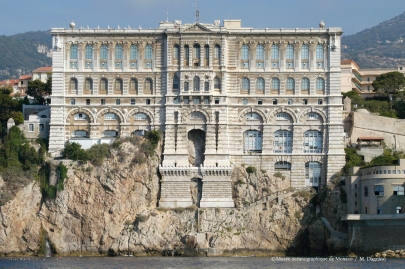
Enter on the other side ! (C) M. Dagnino
Now that you have a better idea of the rich history of the museum and how it came to be, it’s time to go and explore…!
a. Getting tickets and organizing the visit
You can either buy tickets in the outdoor kiosks or online to save time by avoiding the queues. Note that since the summer of 2016, the museum has changed its pricing policy: instead of a flat rate, the entrance fee varies according to the season between 11€ and 16€. You can also buy combined tickets with Monaco’s major attractions such as the Prince’s Palace, Prince Rainier’s car collection or the Exotic Garden.
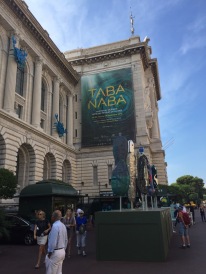
Ticket office outside to the left when facing the main entrance
The attractions of the museum are on four floors based around a central section and two wings and are organised as follows:
- Basement (-1): Aquarium
- Ground Floor (0): main entrance, foyer and temporary exhibits
- First Floor (1): permanent oceanographic exhibits
- Second Floor (2): panoramic observation deck, restaurant and tortoise garden
I would suggest to follow the signposts (though there is nothing imposing an order of visit) and to begin with the aquarium in the basement before working your way up. The museum tends to get crowded during the day in peak season, especially the aquarium, so I would advise to get there as soon as it opens at 9.30am (in summer) or 10am to be able to see everything in peace. Allow minimum 2 hours to visit the museum properly and optimize the entrance fee!.
b. The aquarium
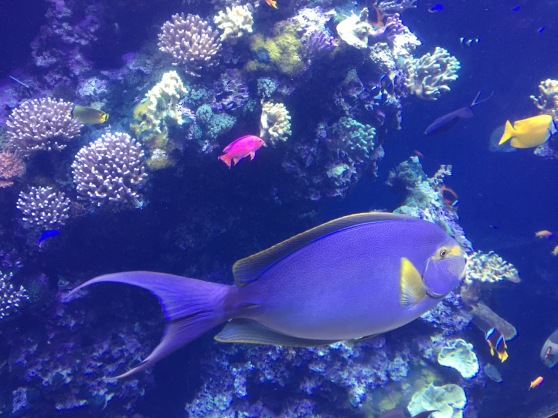
An amazing underwater experience (C) K. Hin
Once you have gone through the main entrance, turn left and head straight down the steps to the famous aquarium, which is split into three sections: the shark lagoon, the Mediterranean area and the tropical seas. The aquarium has been a mainstay of the museum since it opened over a hundred years ago. Initially, Prince Albert I had intended for it to be an annex to the research lab but it proved so popular that it ended up becoming one of the major attractions of the museum and continuously renovated and extended. Science, conservation and research are still at the forefront of the activities and there are plenty of “behind the scenes” activities involved, in particular with a nursery dedicated to raising the smaller fish before they are released into the aquarium and nurturing back to health wild animals like sea turtles that were found injured in the Mediterranean.
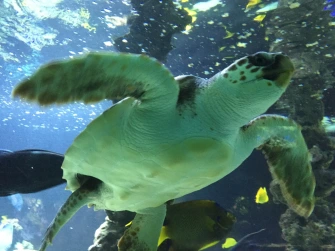
This cute creature was found dying in the port of Monaco a few years ago and is being nurtured back to full health before being released back into the sea. (C) K. Hin
The first section you will encounter is the spectacular shark lagoon that simulates both sides of a coral reef: the sheltered side teaming with small colorful fish and the ocean side, full of sharks, rays, big ocean fish and a very large sea turtle.
Strangely enough the two sides don’t really mingle and the animals get down to their daily business. There are observation windows at all levels and even some benches to sit down and relax on whilst enjoying the awe-inspiring ballet of sea creatures floating around like on a TV screen, this is really somewhere I could spend hours just relaxing and enjoying the views! From a technical perspective, the tank is also an amazing feat, with 400 m3 of water, a depth of 6 metres and the panels are 34cm thick. The coral is natural and was taken from a live reef in the Red Sea off Djibouti – the whole exhibit was financed by a very generous private donor and opened in 2000, though it now feels like it’s been there forever.
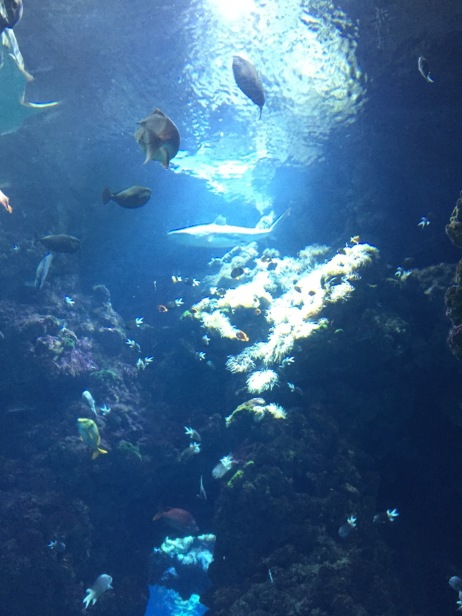
The beauty of the reef (C) K. Hin
Head on towards the Mediterranean section, which has brand new interactive screens enabling to identify the various species and learn some interesting facts about the weird and wonderful creatures like moray eels, jellyfish, garoupa, octopus and the famous “rascasse”, a small red version of a scorpionfish that is very popular in the local cuisine.
Finally, check out the colorful tropical wing on the other side of the shark lagoon to discover life in the coral reef, with sea anemone, lionfish, piranhas, puffer fish and my favourite, the bizarre axolotl, a salamander like amphibian. In any case, pictures are worth a thousand words so I’ll just leave you to get a feel of the place!
For children, at certain times there are special workshops where you can enjoy a guided petting tour of hand-picked animals in a dedicated lab close to the shark lagoon – you need to get separate tickets for this feature at the counters outside or if you spontaneously decide to go for it, you can also buy them in the main hall of the museum.
c. The ground floor
Once you are back at the entrance level, enter the magnificent foyer with its high ceilings, dominated by a pensive statue of Prince Albert I. From there, you can enter two rooms dedicated to temporary exhibitions: the splendid and recently-renovated “Salle d’Honneur” to the right is the main conference room where film screenings and private events take place.
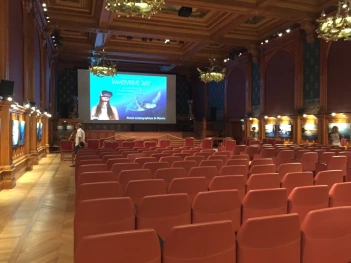
The Salle d’Honneur conference hall
To the left, there is another room for temporary exhibitions. It is currently being used to give visitors the opportunity to stroke baby sharks in basins, this is a pretty fun experience as the texture of their skin is quite surprising, a bit like leather, though they can be a bit tricky to touch – make sure you follow the instructions and wash your hands first but don’t worry, in general they don’t bite as they are hardly great white sharks!
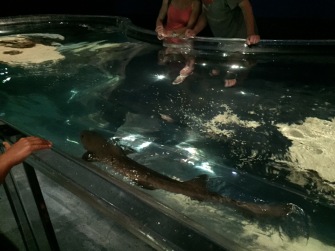
The place to go if you’ve always dreamt of petting a baby shark!
d. The first floor
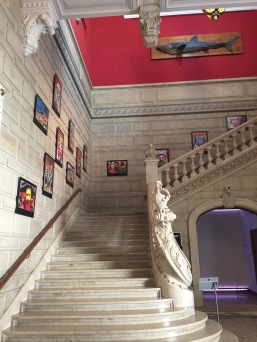
The monumental staircase heading upstairs (C) K. Hin
Make your way up the monumental staircase to the foyer of the first floor and take note of the nice architectural flourishes on top of the staircase including the cast squid and octopus.
The hall itself is dominated by a huge curiosity cabinet called Oceanomania that was designed by New York artist Mark Dion and inaugurated in early 2011: this work of art houses plenty of the museum’s older exhibits including the famous stuffed polar bear that was caught by Prince Albert I in Spitsbergen during his Arctic expeditions in the late 19th century. It’s an original way of housing the older collections and symbolizes the link between science and contemporary art that is promoted by the museum’s management. Also make sure you check out the skeletons of the seal and the very interesting walrus nearby (you’ll see why if you read the explanation panel)!
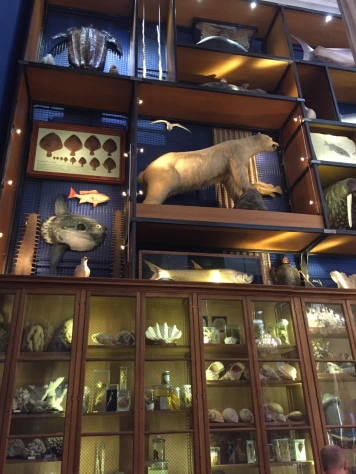
Part pf Mark Dion’s wonderful Oceanomania curiosity cabinet (C) K. Hin
The first floor is organized in the same manner as the ground floor, with two large exhibition halls on each side of the foyer. To the left, the Salle Albert I (formerly the Hall of Physical Oceanography) focuses on the career of Prince Albert I as a scientist and a navigator with plenty of artifacts from his travels to the Arctic. Of particular interest is a reconstruction of the laboratory on his ship L’Hirondelle, where you can see how scientists worked in the Victorian era. Make sure you go up to the mezzanine level for a great aerial view of this huge room and its collections!

Salle Albert 1er (C) K. Hin
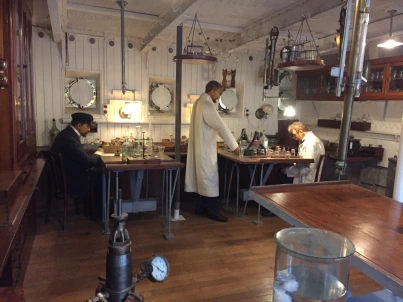
Reconstruction of the Prince’s scientific research lab inside L’Hirondelle (C) K. Hin
On the opposite side of the foyer is the Whale Hall (formerly the Hall of Applied Oceanography), which, as the name suggests is dominated by the huge skeleton of a fin whale, one of the world’s largest living animals, as well as other smaller skeletons of seals, killer whales and even a unicorn-like narwhal!

The Whale Hall (C) K. Hin
The mezzanine floor has interactive touch screens like in the aquarium explaining what each skleleton used to look like. In the middle of the room, there is a really fun and interesting interactive exhibit about the different kinds of sharks and debunking the myths about their killer reputation: 800.000 people are killed by mosquitos each year against less than 10 shark attack fatalities: it’s true that if you don’t go swimming in the ocean and stay on dry land, there is zero risk of getting a limb bitten off by a shark!
e. The second floor
The best way to end the visit! Take the lift (or another long but less spectacular flight of stairs) up to the second floor where you will find a large roof terrace over the east wing of the museum presenting a stunning panoramic view over the sea, the mountains and the coastline heading all the way east towards Bordighera and the Italian Riviera! Pay attention to the architectural flourishes on the façade and the large whale harpoon pointing out towards the sea – it’s a lovely place to relax and enjoy the view after visiting the museum.
On the western wing after the restaurant/cafeteria and the children’s playground, you will find the interesting Tortoise Island full of giant African desert tortoises which were donated to Prince Albert II by the President of Mali in 2012 and escaped the civil war just in time after a coup to be transported to Monaco. These beautiful creatures can be admired and even petted at certain fixed times during the day, although they are certainly less active than their marine counterparts downstairs in the aquarium, preferring to lie in the sun!
Once you are done, make your way downstairs, check out the exhibits that you may want to see again to refresh your memories one last time and exit through the gift shop to the left of the main hall on the ground floor (not through the main entrance).
- After the visit, what next? Make the most of your time in Monaco.
After this fascinating visit to the museum, make sure you walk down to the beautiful Saint Martin gardens just to the left of the museum entrance as you exit and enjoy the cliff-side views and nice fresh atmosphere. These gardens were designed prior to the opening of the museum, back in 1830 and are full of tropical and Mediterranean fauna as well as a nice pond full of carp. Make sure that you go all the way to the bottom where there is a famous statue of Prince Albert I in full action mode at the helm of his ship and a wonderful picture-postcard view of the museum from the side – you can really admire its architectural prowess and cliff-side location with the French Riviera coastline as a spectacular backdrop.
The gardens stretch out all the way to the Cathedral, so you can then extend the tour by following the advice in my Walking Tour of the Old Town of Monaco. Alternatively turn right when exiting the museum and head back down to the port via the spectacular Fort Antoine bastion and follow the advice to enjoy a budget-friendly walk around the Principality in my article debunking the myths that Monaco is an expensive place.
- Practical information
The museum is open all year round from 9.30am/10am to 6pm/7pm/8pm depending on the season, every day except for the Grand Prix weekend and Christmas day.
As I mentioned above, an individual entrance ticket depends on the time of year and varies between 11€ and 16€ at the time of writing. Children under 4 get in for free, after which there are special rates.
See the museum’s website for up to date information and to buy tickets online to save time.
To get there, Monaco buses 1 and 2 will whisk you up from the train station or pretty much any corner of Monaco to the old town: get off at the Monaco Ville bus terminus and walk down a short flight of steps to the museum, you can’t miss it!
If you’re coming by car, just stop at the Parking des Pêcheurs and take the lift and escalator directly to the bottom of the museum.
I hope that you enjoy your visit to the museum and once you have done so, please don’t hesitate to send me your feedback on the French Riviera Blog’s Facebook page (don’t forget to “Like” it for the latest news on the French Riviera) or in the comments section below, I look forward to hearing back from you.
Enjoy your stay on the Riviera and your visit to the Oceanographic Museum! All the best,
Kevin














































